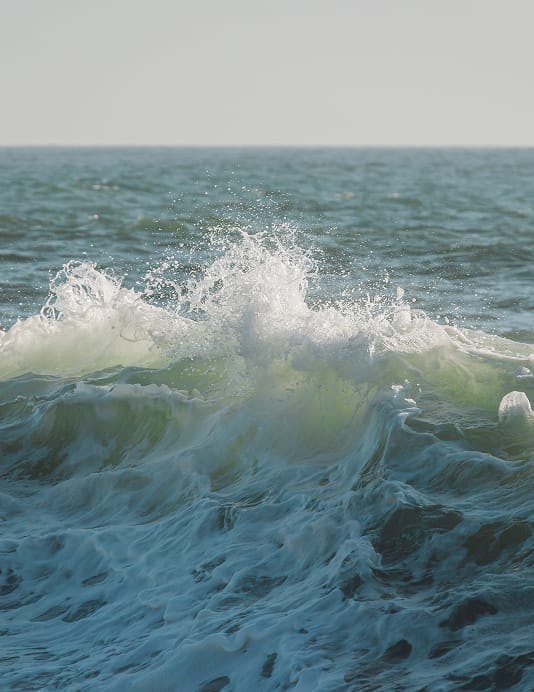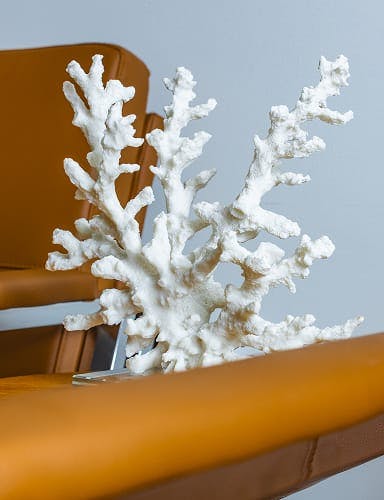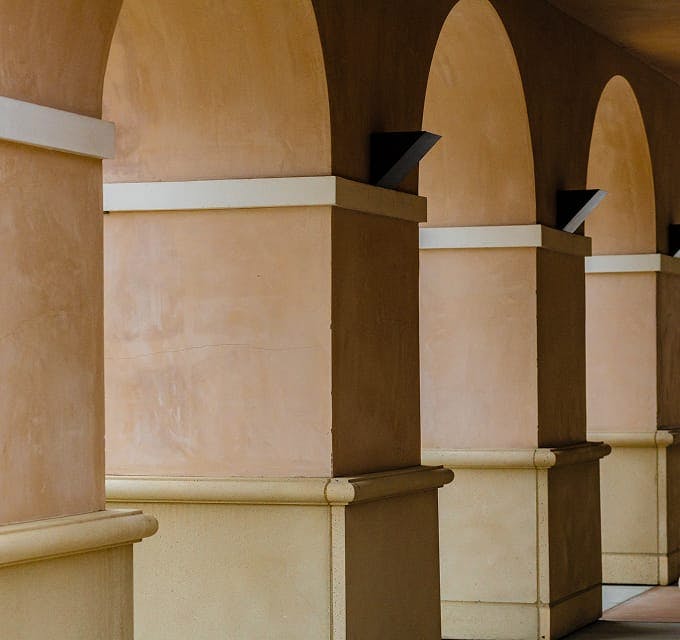Reconstructive surgery after skin cancer focuses on safe removal and natural restoration, helping patients heal with both confidence and comfort.


Restoring Form and Function with Skin Cancer Reconstruction in San Diego
At Coastal Plastic Surgeons, we understand the difficulties that arise from living with unsightly skin tags, moles, and other skin lesions on the body. We perform reconstructive skin surgery to help remove those problem areas on the skin’s surface and provide screenings before moving forward into removal to make sure we have a comprehensive understanding of the area beneath the skin, and how to proceed with your customized treatment.
What Can Reconstruction Surgery Achieve After Skin Cancer?
Safe Removal of Cancerous Skin
Your plastic surgeon can surgically remove cancerous and other skin lesions using specialized techniques to preserve your health and appearance. Skin cancers on the face can be easily removed, and tissue can be examined to see if any cancerous skin remains. Once the cancer is safely removed, the following step in your treatment requires that your plastic surgeon begin the reconstructive process.
Natural Facial Appearance
Although no surgery is without scars, your plastic surgeon will make every effort to treat the area affected by skin cancer without dramatically changing your appearance. One of the primary goals for reconstruction in the face is preventing facial skin cancer defects from imposing on the original form of an individual’s appearance. Restoring function is also key, allowing the face to return to a state that is as normal as possible.
Comprehensive and Personalized Reconstruction
We offer everything from scar revision treatment to skin grafts designed to get your treatment just right. Everything during your reconstruction process is personalized to your medical and aesthetic needs. Grafting from donor areas of the body will also be personalized according to the amount of tissue needed and the tone or pigmentation that best matches the reconstruction site.

How Is Reconstructive Surgery for Skin Cancer Performed?
Treatment Areas
Reconstructive surgery for skin cancer is a flexible and customizable procedure that allows your surgeon to target specific areas for tissue removal. Dr. Batra will work with you during your consultation to determine which areas should be treated and to what degree other areas should be harvested for grafting. Common treatment areas include:
- Upper Face
- Lower Face
- Midface
- Cheeks
- Chin
- Head
- Neck
Procedure Details
You will need a thorough evaluation to determine the reconstruction technique that is most suitable for restoring your skin and the structure of your face. Once a procedure method is chosen, you must follow the proper instructions for preparation prior to surgery. Additional aesthetic surgeries, such as a facelift or a facial implant, may also be considered depending on your needs.
Anesthesia: Reconstructive surgery for skin cancer is generally performed under anesthesia, with the choices typically including local intravenous and general anesthesia. The type of anesthesia is determined by the size and location of the harvest area and reconstruction area.
Grafting: If skin grafting is required to properly reconstruct your problem area, you will have skin removed from one area of the body and moved to repair a damaged area at another location. Skin grafts can be employed through various graft thickness levels, ranging from partial-thickness (harvesting thin layers of skin without an incision) to full-thickness (requires surgical removal and sutures).
No matter what kind of skin graft you receive, each graft will be personally designed to match the shape and size of the target area.
Local Flap Reconstruction: Local flap reconstruction is another method for facial skin cancer reconstruction after skin cancer removal. This technique uses the skin adjacent to the removal site for repair. Local flaps utilize the incisions of the removed section, extending them so that a flap of skin can overlap or “drape” over the area of concern. When done professionally, this method is designed to create the most seamless appearance possible, allowing for more favorable blood supply and pigmentation match.
Major Facial Reconstruction: Unfortunately, skin cancer can sometimes invade other areas of the face, causing extensive disruption to structures within the face and scalp. In this scenario, a specialist in oncology (cancer medicine) is required.
Once your cancer is removed, you will most likely need a plastic surgeon to restore your face to its original state as best as possible. This will require a donor or flap site large enough to compensate for the additional tissue required for your reconstruction. These donor areas may include skin and muscle tissue from areas like the back or leg. As a complex and highly advanced technique, major facial reconstruction is reserved for severe repair to large areas of cancer damage.
I went to Dr. Batra because he was a recommended by my friend and seeing the results he had with her I was impressed! So I decided to do my tummy tuck. In my second week post op I ...
I went to Dr. Batra because he was a recommended by my friend and seeing the results he had with her I was impressed! So I decided to do my tummy tuck. In my second week post op I cried because I was so amazed how my belly looks. I’m going on 4 weeks now and I couldn’t be more proud and Dr. Batra did amazing job on my tummy tuck. I highly recommend him! Speaking about perfectionists, he is and you want that as a surgeon. I’m just so excited and looking forward for full recovery! Thank you Dr. Batra, you’re awesome!
—Q.T.
I’m so pleased with my tummy tuck, everything went super well, and he is the best San Diego. I’m recommending him to my family & friend's. Every follow up appointme...
I’m so pleased with my tummy tuck, everything went super well, and he is the best San Diego. I’m recommending him to my family & friend's. Every follow up appointment he would listen to my questions or concerns and answer everything with honesty. Thank you Dr. Batra.
—L.K.
The most professional, caring and competent staff led by the amazing Dr. Batra! From the first appointment, I was made to feel comfortable and cared for! I highly recommend this pl...
The most professional, caring and competent staff led by the amazing Dr. Batra! From the first appointment, I was made to feel comfortable and cared for! I highly recommend this place! Dr. Batra is not only an outstanding surgeon, but a very kind and caring person with a great personality and sense of humor. I also can’t say enough great things about the staff!
—L.H.
I am in my 6 weeks recovery from breast reduction. I am very pleased with the results. Dr Batra as well as his staff were very comforting before and after the surgery. They schedul...
I am in my 6 weeks recovery from breast reduction. I am very pleased with the results. Dr Batra as well as his staff were very comforting before and after the surgery. They scheduled me for the surgery in less than a month after my first visit and the procedure went by much easier than I expected. My neck and back pain disappeared, the shape and size of my breast is just what I expected. I truly feel that I was lucky to have the surgery done with this amazing surgery group.
—N.T.
I underwent a breast augmentation and lift procedure with Dr. Batra at Coastal Plastic Surgeon’s 10 weeks ago, and I couldn't be more thrilled with the results. From the init...
I underwent a breast augmentation and lift procedure with Dr. Batra at Coastal Plastic Surgeon’s 10 weeks ago, and I couldn't be more thrilled with the results. From the initial consultation with staff to post-operative care, the entire experience was nothing short of wonderful. I was so nervous about having the procedure done but my old implants were encapsulated and needed to come out.
Not only did Dr. Batra deliver outstanding results that exceeded my expectations, but his bedside manner was truly exceptional. He took the time to listen to my concerns, answer all my questions, and ensure that I felt comfortable and informed throughout the entire process.
I highly recommend Dr. Batra to anyone considering a breast augmentation or lift. His skill, attention to detail, and compassionate approach set him apart as a top-tier plastic surgeon. Thank you, Dr. Batra, for your exceptional care and for helping me achieve the confidence I've always desired.
—K.R.
I had an explant and lift on May 9th 2025…the experience was top rate. I felt heard, safe, and comfortable the entire time and the results were just what I hoped for.
—C.T.
My breast reduction experience with Dr. Jindal was exceptional. The entire team is welcoming, helpful, and respectful, especially Gabriela, who helped me so much and was an absolut...
My breast reduction experience with Dr. Jindal was exceptional. The entire team is welcoming, helpful, and respectful, especially Gabriela, who helped me so much and was an absolute pleasure to be around. Dr. Jindal listened to what I wanted and delivered beyond my expectations. He was incredibly kind and attentive during the entire process. If you are considering getting a breast reduction, I highly recommend choosing Dr. Jindal. I am so happy with my results and grateful to the entire team at Coastal Plastic Surgeons.
—P.S.
As a mother of two it was time for...."a little work." After considering multiple surgeons in deferent areas I had consultations with two. After my consultation it was clear....Dr....
As a mother of two it was time for...."a little work." After considering multiple surgeons in deferent areas I had consultations with two. After my consultation it was clear....Dr. Batra was the most knowledgeable, professional and attentive to my concerns. He felt very trust worthy and not creepy at all. The procedure went great and recovery went well. Dr. Betra and his team especially Alexa were the best. Im so happy with my results! I would highly recommend Coastal Plastic Surgery to anyone. Don't put it off ladies it's sooo worth it.
—A.D.
I'm the type of person who doesn't typically write reviews or even have the time, but my recent experience with Coastal Plastic Surgeons is definitely worth my time! I am a mommy o...
I'm the type of person who doesn't typically write reviews or even have the time, but my recent experience with Coastal Plastic Surgeons is definitely worth my time! I am a mommy of three, with my youngest being 2 years of age. After each baby I'd bounce back to my original weight but as you know the beauty of having children can leave devastating damage to the appearance of our bodies. After three breastfed big babies I was left with an unrecognizable belly button, hanging excess tissue and droopy breasts I knew NO workout or diet could remedy! I made the best decision in having a full tummy tuck and breast implants done by Dr. Batra! I never thought I'd be able to wear a two piece ever again! I felt very confident with his knowledge and experience. Trust them when they express their opinions because they were absolutely right! I wanted to go very natural and at first I was afraid with the size preference of the implants chosen for me, but in the end the results were perfect so I'm happy I listened. I would highly recommend this place to anyone who is in doubt!
—A.T.
Is it weird that I'm excited to write this review?! I can't say enough great things about Dr. Batra and his staff! I decided to schedule a BA consultation with Dr Batra after seein...
Is it weird that I'm excited to write this review?! I can't say enough great things about Dr. Batra and his staff! I decided to schedule a BA consultation with Dr Batra after seeing the amazing pictures on his website. Dr. Batra was super warm, honest, and professional from day one. He took time to really listen, offered an honest opinion, and made me feel so comfortable. It has only been 7 weeks since my surgery and I'm already beyond thrilled with my results. Dr. Batra is truly talented yet is so humble. Nicole was so encouraging and genuine through the whole process. Rachel was really sweet and informative. Kelsey is always so pleasant on the phone and makes scheduling a breeze. I was also really impressed by the surgery center. The nurses went above and beyond and seriously spoiled me. I never thought surgery could actually be enjoyable! I was anticipating the worst with the recovery process due to friends experiences, but was blown away by how little pain I experienced. I feel incredibly blessed that I was in such great care and picked such an awesome surgeon! I would do it all over again in a heartbeat and wouldn't change a thing! Thank you Dr. Batra and staff for taking such wonderful care of me and making me feel so special!
—C.M.
I had my first surgery (breast augmentation) in January with Dr. Batra. He is an amazing person besides doctor. He did a great job and has followed me constantly on my recovery. If...
I had my first surgery (breast augmentation) in January with Dr. Batra. He is an amazing person besides doctor. He did a great job and has followed me constantly on my recovery. If you want someone safe and who will contact you or answer you immediately when you have a concern pick him! My last follow up I told him about my legs I’ve been going to the gym for over a decade almost two decades actually and have not been able to shape them. Dr. Batra doesn’t make me feel like anything is wrong with me. He makes me feel so comfortable and it’s so easy to tell him my concerns he told me it was such a common thing and that meant everything to me. He eases my concerns and most importantly makes me feel safe. I had consultants in the past that made me uncomfortable and never went past a consultation. Being a nurse I am a little picky with my health. His staff is amazing I wish I remembered everyone’s name but specifically Miriam is amazing! Not that anyone else is any less it’s just when you go she will be your contact person for almost everything. She answers my questions. She gets back to me immediately even off the clock. You are awesome thank you for answering me. Just today I sent her a message thinking she would get back to me tomorrow morning when she was back at work and she called me after her dinner!!! Thank you for easing my experience. You guys are amazing I can’t wait till next week my second surgery with you and definitely not my last!
—M.C.
My experience with Dr. Batra has been AMAZING! I had multiple consults that left me feeling doubtful. The day I met Dr.Batra he was very knowledgeable and reassuring. I am now comi...
My experience with Dr. Batra has been AMAZING! I had multiple consults that left me feeling doubtful. The day I met Dr.Batra he was very knowledgeable and reassuring. I am now coming up on my third week post-op, and so happy with my results! If you have any desire to do something for yourself book a consultation with Dr.Batra because you won’t regret it.
—X. J.
I just want to say Courtney from Dr. Batras office is so patient and understanding! I could talk to her about anything, I have surgery comming up and have been so nervous about the...
I just want to say Courtney from Dr. Batras office is so patient and understanding! I could talk to her about anything, I have surgery comming up and have been so nervous about the whole process but she has been a huge help! So far im very pleased ill be back to let you know how surgery goes.
—C.F.
null
—AF
null
—RF
null
—YI
null
—SO
I have never met a nicer Doctor/Surgeon. He is not your typical cold, no talk Doctor. He is a very nice and caring person who completely makes you feel comfortable. I had a wonderf...
I have never met a nicer Doctor/Surgeon. He is not your typical cold, no talk Doctor. He is a very nice and caring person who completely makes you feel comfortable. I had a wonderful surgery experience with Dr. Batra. I had to have a hysterectomy and an umbilical hernia repair/tummy tuck. This typically means two separate surgeries. Dr. Batra helped me tremendously because he did my hernia repair/tummy tuck at the same time as my O.B. did the hysterectomy. He is so easy going and kind. I did not have to do two surgeries because he was so workable with my situation and needs. The office ladies are a pleasure to talk to and are very personable. I had a great experience with Dr. Batra and the entire staff. I feel 100% better and my tummy is hernia free and beautiful again! I have recommended him to my friends and family because my experience was truly amazing. Thank You Dr. Batra!!
—AF
I was referred to Dr. Batra by a friend. From the moment I met Dr. Batra I knew he would be my plastic surgeon. I felt so comfortable with him that I booked my surgery the same day...
I was referred to Dr. Batra by a friend. From the moment I met Dr. Batra I knew he would be my plastic surgeon. I felt so comfortable with him that I booked my surgery the same day of the consultation. I had a tummy tuck done with Liposuction. Not only did he do an amazing work but he was so caring and attentive that he put my mind at ease. I highly recommend Dr. Batra to anyone that is interested in plastic surgery.
—RF
I have been getting surgeries since i was 3 years old. I was in a kitchen fire at age 3 and suffered from burn scars on my face and arms. After 18 years of getting surgeries done o...
I have been getting surgeries since i was 3 years old. I was in a kitchen fire at age 3 and suffered from burn scars on my face and arms. After 18 years of getting surgeries done on my face all over southern california I have never met such a talented and generous surgeon! He did a PRO BONO surgery on me without me asking. I have never felt so warm and welcomed in a surgeons office. Him and his staff are amazing. After several consultations with plenty of doctors i automatically knew I wanted Dr. Batra to do my surgery, and i am so happy I did. I recommend him to all of my clients, Family & friends especially for any work on the face. He is the only one i trust. I am forever Grateful of him!
—YI
I would recommend Dr Batra to friends and family. He was very professional in the last year at all visits and during my surgery. I trusted that he would do a good job and my result...
I would recommend Dr Batra to friends and family. He was very professional in the last year at all visits and during my surgery. I trusted that he would do a good job and my results were better than I expected.
—SO
I am currently 3 months post op after having both a tummy tuck and an arm lift. Dr. Batra is a true artist. He, Dr. Rod, Miriam, and the rest of his team were all fantastic. I love...
I am currently 3 months post op after having both a tummy tuck and an arm lift.
Dr. Batra is a true artist. He, Dr. Rod, Miriam, and the rest of his team were all fantastic.
I love my new silhouette. The end results are way better than I ever imagined they could be!
—AL
I had a Tummy Tuck six months ago and i couldn’t be happier. Dr. Batra’s staff, surgical team and staff were amazing. Dr. Batra is confident, caring and gave me a phenomenal new tu...
I had a Tummy Tuck six months ago and i couldn’t be happier. Dr. Batra’s staff, surgical team and staff were amazing. Dr. Batra is confident, caring and gave me a phenomenal new tummy. I would encourage everyone who’s considering plastic surgery to make an appointment with him for your free consultation and you’ll see what I mean. Good Luck.
—JK
My surgery was a HUGE success. More important than how wonderful my surgery and surgeon was, I felt completely cared for and even pampered throughout my care leading up to surgery ...
My surgery was a HUGE success. More important than how wonderful my surgery and surgeon was, I felt completely cared for and even pampered throughout my care leading up to surgery and after. Today was a huge day for me. For the first time in over 10 years I went to the beach confidently wearing a bikini. The only reason I was able to do this was because of Dr. Batra and his staff. And the excellent customer service and care just keeps going. I will never go to another surgeon if I ever need plastic surgery again. I am 5 weeks out of surgery, my true results are not even there yet, and I feel like a new person. Thank you just doesn’t seem to cover it. If you are considering plastic surgery go see Dr. Batra. I cannot say enough. And I still love you, Maryam!!
—JF
I couldn’t ask for a better surgeon and I love my outcome!!! I get compliments all the time on how perfect my breasts are and would recommend him to anyone! Including my good frien...
I couldn’t ask for a better surgeon and I love my outcome!!! I get compliments all the time on how perfect my breasts are and would recommend him to anyone! Including my good friend who also got a breast augmentation from Dr. Batra and can’t stop talking about them! Thanks Dr. Batra, you and your staff are amazing!
—KC
After multiple consultations with plastic surgeons in and out of the area, I decided on Dr. Batra. I had 2 breast surgeries from another p.s. both ending with capsular contracture ...
After multiple consultations with plastic surgeons in and out of the area, I decided on Dr. Batra. I had 2 breast surgeries from another p.s. both ending with capsular contracture and a lot of miscommunication, so finding a surgeon who is humble, confident, and attentive was very important to me. Dr. Batra has the hands of an angel and I hardly felt any pain after surgery, and what little pain I did feel Tylenol took care of. I am 10 weeks post op and my results are beautiful and I can finally be confident about my breasts thanks to Dr. Batra. I would definitely recommend him to anyone, especially those who are needing a revision.
*Update- I am 16 months post op and have healed beautifully! Just wanted to update this because I know how difficult it is finding a really good surgeon, and I’m just so happy and grateful everything turned out well thanks to Dr. Batra.
—CB
Dr. Batra is a true Artist. I’m six months out from my surgery. I couldn’t be happier with my outcome. My breasts are PERFECT and so is my liposuction. After having a baby and brea...
Dr. Batra is a true Artist. I’m six months out from my surgery. I couldn’t be happier with my outcome. My breasts are PERFECT and so is my liposuction. After having a baby and breast feeding, I was very self conscious about wearing a bikini or strapless dresses. After Dr. Batra did my surgery, I can wear anything I want. I love the implant size that Dr. Batra recommended for me. They look and feel very natural. Thank you Dr. Batra for giving me my body back.
—MG
I had an amazing experience with Dr Batra and his staff at Coastal Plastic Surgeons over the last year while having a tummy tuck post twins. From my initial visit, to pre op, the a...
I had an amazing experience with Dr Batra and his staff at Coastal Plastic Surgeons over the last year while having a tummy tuck post twins. From my initial visit, to pre op, the actual surgery and many follow up appointments, he remained professional and the staff was very helpful. I would recommend him and his team to friends and family.
—SO
I have been seeing Dr. Batra for several years. He originally repaired a botched breast reduction and lip enhancement messed up by a well known Del Mar plastic surgeon. Since that ...
I have been seeing Dr. Batra for several years. He originally repaired a botched breast reduction and lip enhancement messed up by a well known Del Mar plastic surgeon. Since that time, I have continued to see Dr. Batra for way less serious problems and overall “fun” improvements. He is the best botox and filler doctor out there. I rarely even bruise after the injections. I have been to other doctors in the past for this and experienced severe bruising.
I went to see Dr. Batra today and after I left his office, I felt compelled to let you all know again how great he and his staff are. I just love those guys and the great work that they do.
—CT
My breasts were left physically deformed after nursing 3 boys, but Dr. Batra revived my breasts and made them perfect!! I could not be happier with the customer service, cost, and ...
My breasts were left physically deformed after nursing 3 boys, but Dr. Batra revived my breasts and made them perfect!! I could not be happier with the customer service, cost, and work that was done to me. I had a breast augmentation (no lift) and got 440cc silicone implants. It has been only a month since surgery but I am MORE than satisfied with the results!
Thank you Dr. Batra and team! You have rejuvenated my spirit!!!
—AD
Easing Your Concerns
Recovery
After your reconstruction has been completed, you may experience soreness, redness, and draining of small amounts of fluid from the incision area. Your surgeon will provide wound care instructions that must be followed and instructions for taking proper pain medication.
Pain
Reconstruction surgery for skin cancer is typically performed under anesthesia, so the only pain you will experience is the injection of the anesthesia itself. Following the operation, patients will experience irritation, inflammation, and mild to moderate pain in the treated areas. Prescription or over-the-counter pain medications may be used to manage subsequent pain. The swelling and discomfort should be alleviated in just a couple of weeks.
Scars
Reconstruction surgery for skin cancer requires that small to significant incisions be made to reposition and repurpose flaps and skin grafts. Because of this, the significance of scarring is usually determined by the amount of grafting and flap required for proper reconstruction. The site for reconstruction itself will be treated in a way that creates the most seamless and smooth resurfacing of the skin possible. Any scars that develop should fade over time with proper care. This includes keeping the skin away from direct sunlight to speed the healing process and applying proper nutrients to the skin with topical creams.
Cost
Reconstruction surgery for skin cancer in San Diego can vary based on a multitude of factors. These may include: The amount and size of treatment areas
- Anesthesia fees
- Surgical fees
- Facility fees
You will receive a personalized quote after you consult with Coastal Plastic Surgeons.


FAQs Reconstructive Surgery for Skin Cancer
When will my final reconstruction results be visible?
Your final results will become apparent over time as your graft or flap adjusts to the skin’s blood flow. Over the following six months, the body should provide the area with the proper nourishment.
Your results are permanent, as the extracted tissue will begin to regenerate in the treated area. The final visibility of results depends on the amount of tissue harvested and reapplied, although patients typically see fully recovered results within a year.
Am I a candidate for reconstruction surgery for skin cancer removal in San Diego?
Ideal candidates for reconstruction are non-smokers who are physically healthy and do not have medical conditions that hinder healing. Ideal candidates should have realistic expectations of their results and be willing to consider a donor area of their body to reconstruct their defective skin.
Will reconstruction help the structure of my nose?
Nose reconstruction after skin cancer can be performed to help correct the defects and disfigurement caused by skin cancer. The nose is a complex structure and requires specialized techniques to accommodate the various angles of the nose. Many patients find success with reconstruction that only addresses the outer layer of the nose. More extensive reconstruction may require more than one procedure to complete an aesthetically and functionally pleasing reconstruction. If functional treatment is required, a rhinoplasty or septoplasty may be combined for a more comprehensive correction.
How dangerous is skin cancer?
Skin cancer is usually the result of sun damage and is the most common form of cancer in the United States and worldwide. The estimated five-year survival rate for U.S. patients whose melanoma is detected early is about 99 percent.




